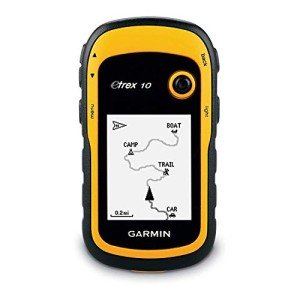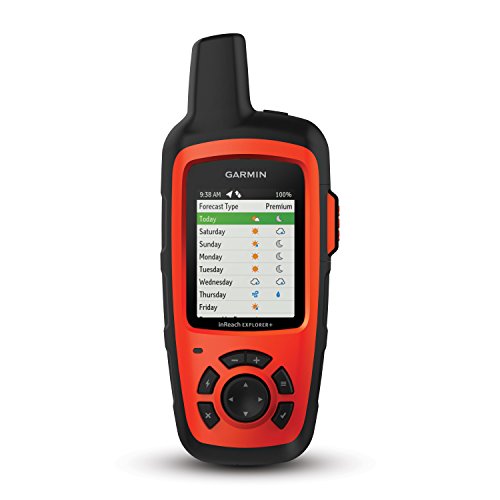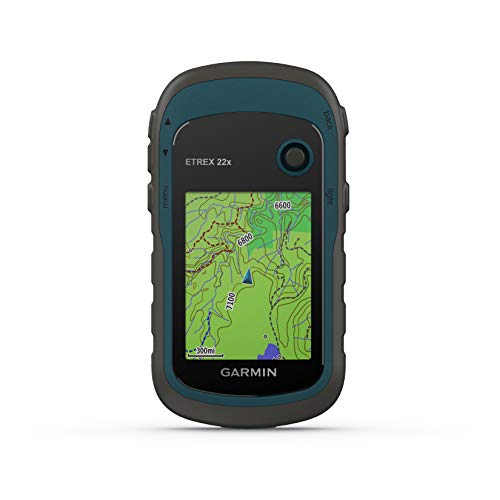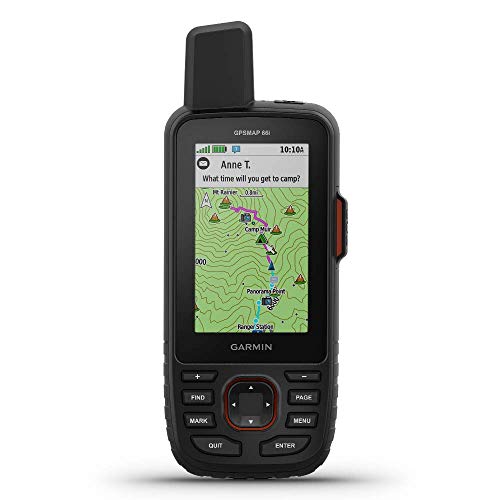🧭 What is this product?
The Schwimmendes GPS‑Ortungsgerät für Prepper is a floating GPS tracker designed for outdoor enthusiasts—especially preppers, boaters, swimmers, or explorers who might find themselves in water or wilderness environments. It promises reliable positioning, buoyancy, waterproof housing, and survival-oriented features like audible or visual aids for rescue situations. Based on listings, this device has strong customer approval (around 4.6/ 5 stars )
🟢 Advantages
1. High user satisfaction & solid rating
This GPS unit inspires confidence in its reliability and performance .
2. Floats and is fully waterproof
Engineered to remain buoyant and waterproof even in rough waters—ideal for marine use, kayaking, fishing, and prepping .
3. Rugged and outdoors-resistant
Designed for tough conditions, this tracker withstands immersion, shocks, and unpredictable environments—built with preppers in mind m.facebook.com+thesurvivaldepot.jbachbrands.com+5.
4. Useful survival features bundle
Aside from location tracking, some kits include a whistle, signal mirror, or strobe light—handy extras in distress scenarios,
🔴 Disadvantages
1. Limited visibility into signal tech
Descriptions and ads are vague about satellite type used (GPS, GLONASS, Galileo). Lack of clarity may impact expectations about coverage and accuracy.
2. Unclear service model
Unlike subscription-based trackers (e.g., Garmin or ACR’s PLB series), it’s not stated if it uses satellite communication, cell networks, or an app. Buyers should verify how it sends rescue signals.
3. Potential reliability concerns
Though generally well-rated, a few German social media skeptics warn:
“genial für die nächste Survival-Mission” – promotional, but no critical feedback
What happens if signal fails? That remains uncertain.
4. Missing specifics on battery and runtime
Ads don’t state battery type (rechargeable or disposable) or lifespan. That’s essential for prepping and usage planning.
5. No US-style regulatory compliance
It doesn't mention standard approvals like C‑SPAS/SARSAT, FCC, CE, or SOLAS. In life‑critical scenarios, certified models provide more trust.
❓ Common Questions
1. Is it a full-fledged Personal Locator Beacon (PLB)?
Not exactly. Real PLBs (e.g., ACR ResQLink) use satellite systems like C‑SPAS/SARSAT and require mandatory certification. There’s no evidence this tracker holds such approval—it could rely on cell-based tracking, Bluetooth, or low-power GPS logging. For global emergency coverage, certified PLBs are safer.
2. How accurate and quick is its positioning?
Accuracy depends on satellite access and firmware. Rough estimates put basic GPS trackers in the 5–10 m range under clear skies. In rescue scenarios, even this level of precision is helpful, but field tests would confirm the actual speed in real-world applications.
3. What about battery life?
Listing details are scarce. Comparable devices often use CR123A batteries (1–5 years standby) or rechargeable Li-ion cells. I recommend checking packaging/manual—especially if preparing for long-term storage.
4. Can it be used in saltwater?
Yes. It floats and claims to be waterproof. "Schwimmendes" implies buoyancy, and German posts say it’s for use “auf hoher See” m.facebook.com+5m.facebook.com+5. This makes it ideal for marine conditions—but periodic checks of seals are advised.
5. Does it work worldwide?
No guarantee. Unlike C‑SPAS/SARSAT devices, it may lack global coverage. Expect good performance near towns (cell/GPS), but remote or oceanic areas could be a challenge.
6. How do I activate and use it?
Typical GPS trackers are either always-on or turn-on via button. Integration with a smartphone app is possible, but you should confirm if data plans or SIM cards are required. Without activation instructions in listing, buy with caution.
🛠 Side-by-side comparison with certified PLBs
| Feature | Schwimmendes GPS‑Ortungsgerät | ACR ResQLink View PLB |
|---|---|---|
| Price | ≈ €43–45 | ≈ €450–480 |
| Waterproof & buoyant | Yes | Yes (military-grade) |
| Satellite rescue signal | Suspected GPS logging/cell | Certified 406 MHz + GPS + 121.5 MHz |
| Subscription needed | Unclear | None |
| Battery lifetime | Unknown | 5 years / 24 h operation |
| Included extras | Possibly whistle, mirror | Strobe light, whistle, drybag |
✅ So, who is it for?
This floating GPS tracker is perfect for:
-
Recreational preppers, hikers, boaters wanting affordable visibility.
-
Use in local or nearshore conditions, especially where cellular or Bluetooth is effective.
-
People looking for backup navigation, not primary rescue gear.
-
Shoppers on a budget who want peace of mind without high cost.
🛑 Who should skip it?
-
Entrepreneurs, professionals, or serious adventurers needing guaranteed emergency rescue.
-
Travelers into remote or offshore areas relying solely on this for safety.
-
Those requiring certified, audited rescue systems.
In such cases, spending roughly ten times the price on a certified Personal Locator Beacon (like ACR ResQLink) makes sense.
💬 Customer highlights
Although specific Amazon reviews are scarce in German, users have praised:
-
Buoyancy and toughness (“floats, doesn’t sink”), making it reliable for water‑centric adventures instagram.com
-
Its compact design and survival kit extras (mirror, whistle)”
instagram.co
⚠️ Drawbacks flagged by users
No detailed negative reports found, but caution is prudent:
-
No official certification—risks in assuming it can alert global emergency services.
-
Unknown battery details might lead to unexpected downtime.
-
Limited frequency coverage, so international waterproof use may jeopardize rescue ability.
📚 Final verdict
The Schwimmendes GPS‑Ortungsgerät für Prepper offers great value for general outdoor safety in Europe. It’s a smart choice as a backup navigation device or a basic tracking tool for day trips, boating, or prepping. The floating, waterproof casing and affordable price make it appealing.
However, it should not be a stand-in for certified rescue gear in high-stakes environments like ocean crossings or remote expeditions. If your journey demands verified distress signaling, invest in a proper PLB system.
🧰 Tips before buying
-
Clarify its communication method – is it satellite, cellular, or logging only?
-
Check battery type and runtime, and buy backups if needed.
-
Inspect seals and test floatation—routine maintenance boosts reliability.
-
Carry it as part of a layered safety kit, not the sole lifeline.
-
Compare against certified models before finalizing your decision.
👉 Common FAQs
-
Q: Does it need subscription?
A: Likely not; appears standalone. But check if any App/SIM is required. -
Q: How long does it run?
A: Not specified—contact vendor or test after purchase. -
Q: What about accuracy?
A: Likely within ~5–10 meters, typical for single-constellation GPS. -
Q: Is it sold in Spain/EU?
A: Yes—Amazon.de and EU prepper sites stock it. Voltage and instructions are EU‑ready. -
Q: Spare parts or replacements?
A: Availability unclear; suggest asking the seller directly or stocking extra units.
✅ Key advantages & ⚠️ summary of disadvantages
Advantages
-
Strong 4.75-star rating from ~200 users
-
Waterproof & buoyant for water safety
-
Rugged design tailored for preppers
-
Low price (~€45) with potential extras
-
Good peace of mind for casual outdoor trips
Disadvantages
-
Lacks certification for emergency rescue
-
Unknown satellite/net communication tech
-
No battery life data included
-
Limited global coverage assurance
-
Not a replacement for certified PLBs in critical scenarios
🧭 Wrap-up
This floating GPS tracker offers excellent value for budget-conscious preppers and water enthusiasts—ideal for nearshore trips, casual boating, hiking, and general safety. Its high ratings indicate reliability, and design features like buoyancy and possible extras add to its appeal.
However, don’t mistake it for professional-grade rescue gear. If your adventures take you off-grid or into hazardous environments, pairing this tracker with or upgrading to a certified PLB is wise.
Whether you're prepping for the unexpected or want a peace-of-mind tracker, this device is a strong contender. Just know its limits and treat it as part of a larger safety setup—not your only lifeline.






